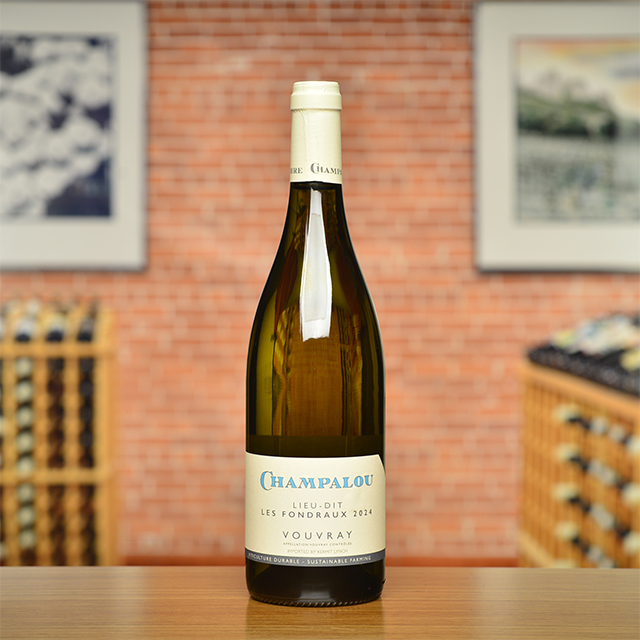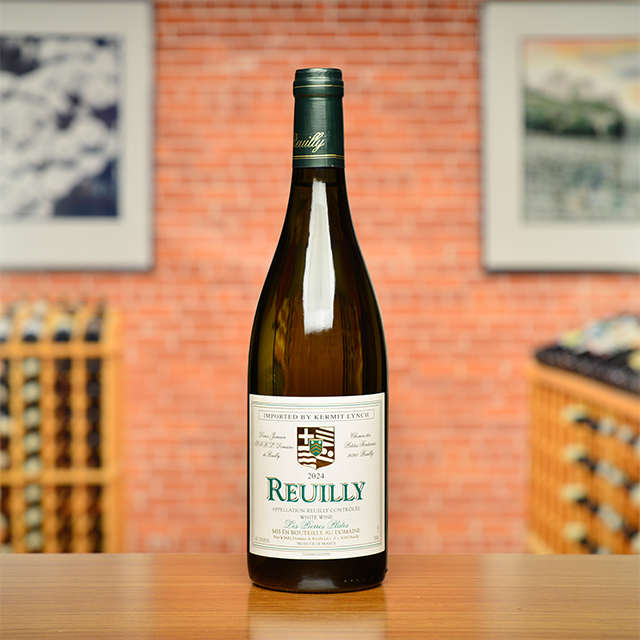Notify me
2018 Quincy
Domaine Trotereau
Only about thirty-five growers produce wine in the tiny 200-hectare appellation of Quincy, which means you don’t see much of it in the U.S. market. It’s a shame, as cheerful, unoaked wine like this one happens to be the antidote to your post-holiday blues. Grown on pink limestone and sandy soil flecked with sparkly silex, the Sauvignon Blanc of Quincy is a little more plump than its neighbors in Reuilly and Sancerre. One glass has enough sunbeams to brighten and lengthen even the shortest winter days.
| Wine Type: | white |
| Vintage: | 2018 |
| Bottle Size: | 750mL |
| Blend: | Sauvignon Blanc |
| Appellation: | Quincy |
| Country: | France |
| Region: | Loire |
| Producer: | Domaine Trotereau |
| Winemaker: | Pierre Ragon |
| Vineyard: | 10.64 ha |
| Soil: | Sandy, Silex, Pink Limestone |
| Farming: | Lutte Raisonnée |
| Alcohol: | 14.5% |
More from this Producer or Region

2023 Chinon Rosé
France | Loire
Matthieu Baudry captures both youthful fruit and energizing mineral textures with this rosé.

2022 Quincy “Vieilles Vignes”
France | Loire
Pierre’s old-vine Quincy has a mouth-coating texture and charming notes of tangerine that are certain to earn this great appellation the following it deserves.

2023 Muscadet Sèvre et Maine Sur Lie
France | Loire
It fills the mouth with suspicions of honeysuckle and pulpy stone fruits, all while maintaining classic notes of iodine and sea breeze that make this the vinous equivalent of tidepooling.

2024 Vouvray “Les Fondraux”
France | Loire
The contrast of ripe, succulent Chenin Blanc fruit with a spike of flinty minerality is like licking honey off an arrowhead.

2022 Sancerre Rouge
France | Loire
Pure, classy fruit sing tenor without any interference from the earthy bass that often makes itself heard in Bourgogne rouge.

2024 Reuilly “Les Pierres Plates”
France | Loire
Consistently one of the Loire’s finest Sauvignon Blancs

2015 Chinon “Les Petites Roches” MAGNUM
France | Loire
Given light treatment in the cellar, this wine shows off Cabernet in its most delicate, charming form.

2022 Quincy “Château de Quincy”
France | Loire
Textured, lush, full of aromatic gooseberry and passionfruit—all supported by spiny minerality.

2023 Vouvray “Pierres Rousses”
France | Loire
This wine is deep and textural, with serious presence on the palate and a dry, flinty finish.

2020 Saumur Blanc “L’Échelier”
France | Loire
This dry Chenin Blanc is etched from the white limestone beneath—crystalline, pure, and chiseled.
About The Producer
Domaine Trotereau
About The Region
Loire

The defining feature of the Loire Valley, not surprisingly, is the Loire River. As the longest river in France, spanning more than 600 miles, this river connects seemingly disparate wine regions. Why else would Sancerre, with its Kimmeridgian limestone terroir be connected to Muscadet, an appellation that is 250 miles away?
Secondary in relevance to the historical, climatic, environmental, and cultural importance of the river are the wines and châteaux of the Jardin de la France. The kings and nobility of France built many hundreds of châteaux in the Loire but wine preceded the arrival of the noblesse and has since out-lived them as well.
Diversity abounds in the Loire. The aforementioned Kimmeridgian limestone of Sancerre is also found in Chablis. Chinon, Bourgueil, and Saumur boast the presence of tuffeau, a type of limestone unique to the Loire that has a yellowish tinge and a chalky texture. Savennières has schist, while Muscadet has volcanic, granite, and serpentinite based soils. In addition to geologic diversity, many, grape varieties are grown there too: Cabernet Franc, Chenin Blanc, Sauvignon Blanc, and Melon de Bourgogne are most prevalent, but (to name a few) Pinot Gris, Grolleau, Pinot Noir, Pineau d’Aunis, and Folle Blanche are also planted. These myriad of viticultural influences leads to the high quality production of every type of wine: red, white, rosé, sparkling, and dessert.
Like the Rhône and Provence, some of Kermit’s first imports came from the Loire, most notably the wines of Charles Joguet and Château d’Epiré—two producers who are featured in Kermit’s book Adventures on the Wine Route and with whom we still work today.
More from Loire or France
2024 Muscadet “Le Clos de la Butte”
Eric Chevalier France | Loire
2024 Sancerre
Hippolyte Reverdy France | Loire
2024 Bourgueil Rosé “La Ritournelle”
Catherine & Pierre Breton France | Loire
2024 Vouvray “Les Fondraux”
Champalou France | Loire
2024 Coteaux du Loir Blanc
Pascal Janvier France | Loire
2022 Chinon Blanc
Bernard Baudry France | Loire
2020 Saumur Champigny “La Marginale”
Thierry Germain France | Loire
2016 Jasnières “Chant de Vigne”
Christine de Mianville France | Loire
2020 Saumur Blanc “Clos Romans”
Thierry Germain France | Loire
2024 Cheverny
Domaine du Salvard France | Loire
2022 Jasnières “Cuvée Sainte Narcisse”
Pascal Janvier France | Loire
2023 Muscadet Sèvre et Maine Sur Lie
Domaine Michel Brégeon France | Loire
2024 Muscadet “Le Clos de la Butte”
Eric Chevalier France | Loire
2024 Sancerre
Hippolyte Reverdy France | Loire
2024 Bourgueil Rosé “La Ritournelle”
Catherine & Pierre Breton France | Loire
2024 Vouvray “Les Fondraux”
Champalou France | Loire
2024 Coteaux du Loir Blanc
Pascal Janvier France | Loire
2022 Chinon Blanc
Bernard Baudry France | Loire
2020 Saumur Champigny “La Marginale”
Thierry Germain France | Loire
2016 Jasnières “Chant de Vigne”
Christine de Mianville France | Loire
2020 Saumur Blanc “Clos Romans”
Thierry Germain France | Loire
2024 Cheverny
Domaine du Salvard France | Loire
2022 Jasnières “Cuvée Sainte Narcisse”
Pascal Janvier France | Loire
2023 Muscadet Sèvre et Maine Sur Lie
Domaine Michel Brégeon France | Loire
Kermit once said...

Kermit once said...
You don’t have to be rich to cellar a great wine.

















